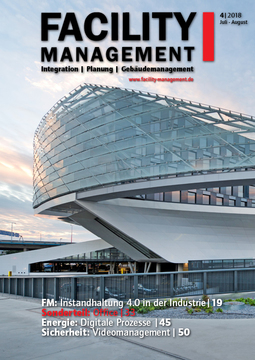Das gab es noch nie, aber da die Haussprache der Europäischen Zentralbank Englisch ist, machen wir eine Ausnahme: Der Siegerbeitrag hier für alle Interessierten im Original!
The ipv idea, to have integrated processes that save administration fees by having one major service partner for several businesses might not be the perfect fit for every public organisation.
Often times, the ipv implementation comes along with the outsourcing of internal head staff which will provide the service as external suppliers in the future.
Within the European Central Bank this kind of outsourcing is not being focussed on so that the saving of administration fees by using integrated processes has to be compensated by applying a different methodology. The facility management in the ECB is based on three different divisions with a lot of interfaces. Namely the infrastructural facility management, the technical facility management, and the security management. The focus of all divisions is to offer the best possible services to their customers.
These customers are for example colleagues, guests from other central banks, the institution itself, and every person that is invited to enter any of the three buildings of the European Central Bank.
But how can the public organisation benefit from ipv anyway?
We wanted to create a tool to help us in controlling heterogeneous services of several service suppliers with an integrated management tool based on a homogenous structure. Through the methodology of ipv with having an integrated process, we tried to build a common understanding for the Service Provider Management within the ECB.
As discussed before, the structure regarding the Facility Management within the ECB is complex with its varietiy of interfaces and different suppliers for all provided services. To start with the implementation of integrated processes, we piloted it in the infrastructural management and will roll it out ECB-wide afterwards.
The start was a Service Commitment Project during which we collected and defined all our provided services. Each contract with each Service Provider was reviewed starting with the documentation of each Service Level and all agreed KPI’s. The aggregated documentation was inputted into a service catalogue which will clearly communicate to the customers which services are possible and available, and which are not
The second step was to create a new culture of service provider management. With support of the service leader who operates our contracts as a counter part to the service supplier we defined standard processes that shall fit all. This includes the measurement system used to visualize the success of the contract as well as operational activities, like meeting minutes and how to steer the suppliers.
From the perspective of the DIN 9001:2015 this Service Provider Management is a product and the definition is documented in a process-oriented way. During the contract lifecycle contract amendments and change processes are easily covered. This is useful as a continuous improvement process for the following tendering and procurement process as well as time savings in internal administration.
The implementation of the new Service Provider Management increases the professional line-up of the infrastructural Facility Management in the European Central Bank and helps our organisation to be best prepared for the future. By implementing this new approach, we will constantly be aware of the operator’s responsibility and will have the right tools at hand to have the best possible documentation to ensure that the European Central in Bank is exculpated in case of any doubt.
Even for a public organisation like the ECB, the ipv idea will save internal administration fees without outsourcing or providing all services via a single supplier.

